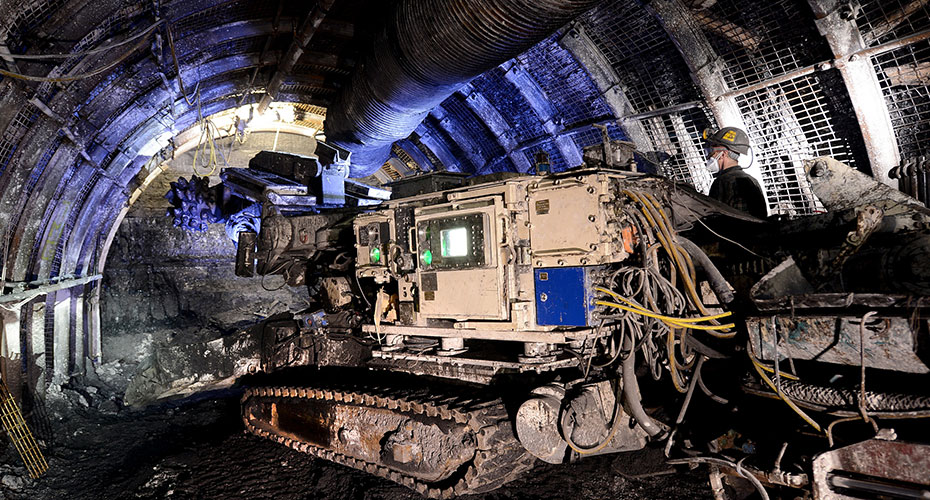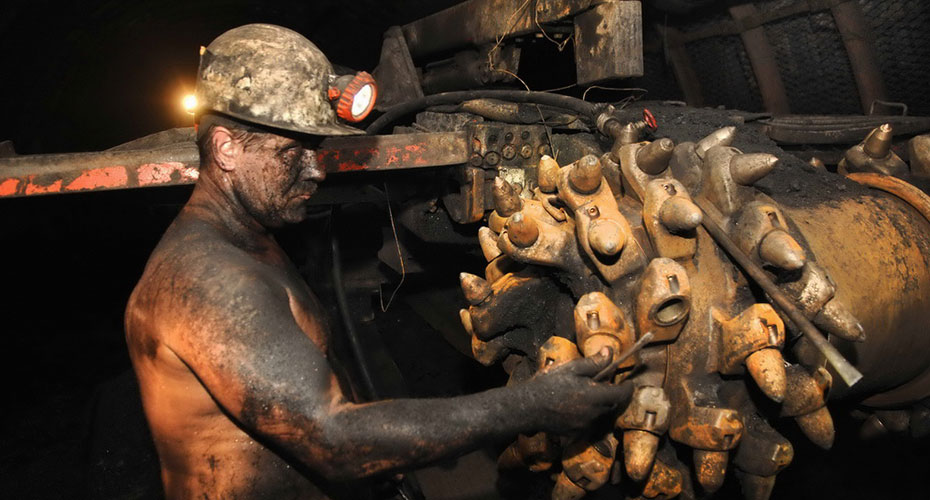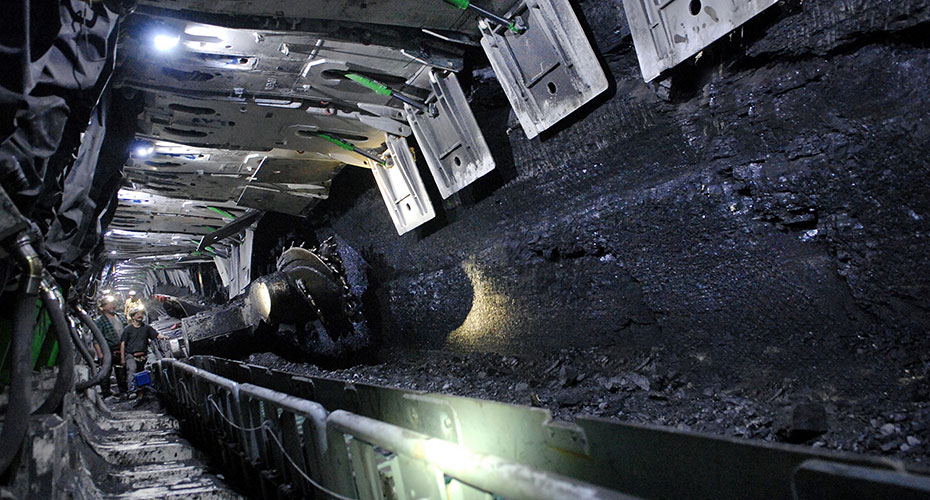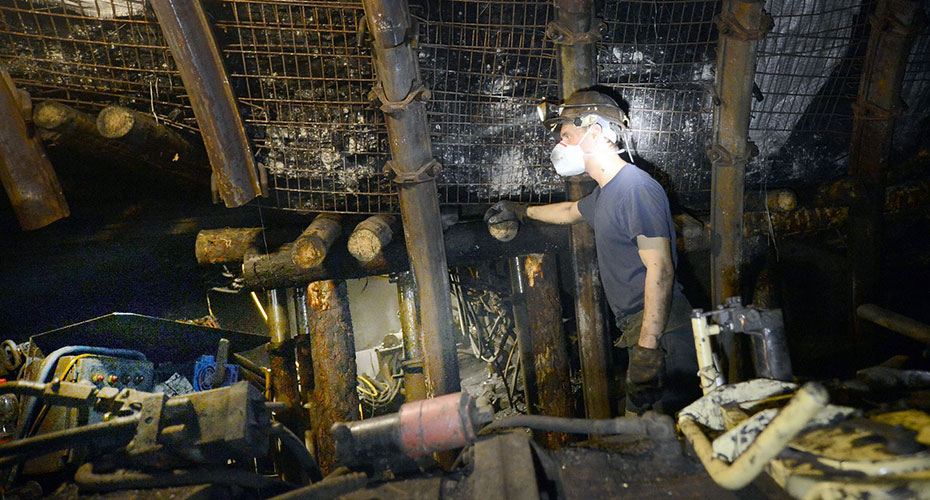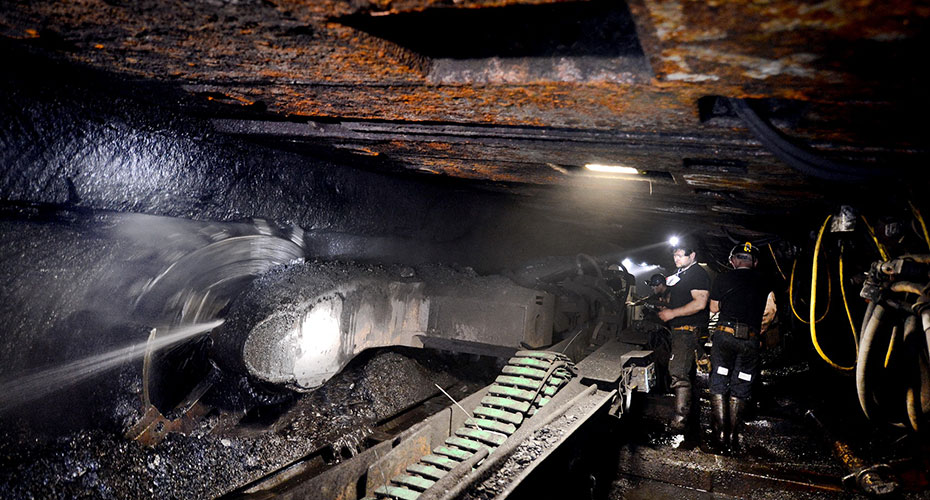Consortium
University of Exeter (UNEXE)
A top 20 UK university, ranked amongst the world’s top 200 universities in the Times Higher Education rankings. With more than 170 EU funded research projects, the University has significant experience of participating in and managing international research projects.
The University of Exeter research team are based at the Camborne School of Mines (CSM) which is a multidisciplinary research institute that brings together expertise from civil and mining engineering, geology and minerals engineering. CSM research areas include numerical analysis, rock mineralogy, rock mechanics and rock breakage, mining and minerals technology.
Laboratories include two QEMSCAN® automated mineralogical analysis systems, a field emission SEM with energy dispersive X-ray analysis, a wavelength dispersive electron probe microanalysis system, ICP-MS, XRD and XRF.
Who we are
The ROCD coordinator Dr Ben Williamson has 20 years’ experience in the sampling and characterisation of airborne particulate and in determining environmental impacts from mining-related activities. In the ROCD project, he will coordinate the work carried out by the University of Exeter, ensure the smooth implementation of the project and oversee the successful completion of all milestones and deliverables. His research within the project will mainly focus on the development of new automated techniques for the mineralogical characterisation of coal mine dusts.
Prof Patrick Foster is an Associate Professor in Mine Safety at the Camborne School of Mines where he undertakes research into the health, safety and working environment aspects of mining and quarrying. His particular research interests are in safety management systems, human factors, risk management, surveying and underground communications. His main task within the ROCD project is to provide guidance on legislative aspects and international best practice relating to coal mine dusts.
Prof Kip Jeffrey is Head of Camborne School of Mines and First Quantum Minerals Professor of Mining Education. He is an expert in industrial minerals, mining geology and the development of new methods in mining education (particularly distance learning). His main tasks within the ROCD project will be to provide guidance and best practise on the development and delivery of the project website, industry engagement, training materials, and public information packs.
Główny Instytut Górnictwa (GIG)
Created in 1945, Główny Instytut Górnictwa is a Polish governmental institute engaged in research and consultancy related to the hard coal mining sector. Its activities include: mining engineering, geology and hydrogeology, geophysical engineering, combating natural and technical hazards, monitoring and environmental protection and certification of equipment and materials. The company has 586 employees including over 448 graduates of whom more than 112 hold PhD or DSc degrees. GIG has extensive experience as a partner and co-ordinator of EU and RFCS projects, being currently involved in 23 EU co-funded research and development projects, 12 RFCS (5 as coordinator), 3 FP7, 2 HORIZON 2020 and other projects.
The Laboratory of Air Dust Measurements will lead the work in the ROCD project. It is accredited with the Polish Accreditation Centre (AP 010) for standardizing dust counters: Barbara 3A, CIP-10, SKC and AP-2000Ex. The Laboratory also has PCA accreditation as a research laboratory (no. AB 005) for measurements of dust concentrations at work stations. It also conducts tests on the effectiveness of dust separators and spraying installations.
The Laboratory is equipped with CIP-10 and Barbra 3A particle counters, aspirators, Hund scattered-light photometers for respirable-dust measurements, Sartorius analytical balances, dryers and an infrared spectrophotometer, and owns the “Barbara” Experimental Mine. The Laboratory is supported by the Laboratory Department of Extraction Technologies and Mining Support which has expertise in rockburst hazards, geomechanics, support (longwall, roadways support and shaft linings) and extraction systems. It brings the following equipment and methods: penetrometer, capo-test, borehole camera, shaft inspection probe, rock cutability assessment device and ground penetration radar.
Instytut Techniki Górniczej (KOMAG)
KOMAG is a centre for research and development with 230 employees specialising in proprietary market activity in the European Research Area. The scope of KOMAG’s activities include research and development in mining and minerals processing as well as environmental protection, mine work safety and waste management. KOMAG has 65 years’ experience in mechanizing mining operations in Poland and a working culture optimised for generating new ideas and products.
The first Polish mechanized longwall systems and hoisting machines were designed at KOMAG and the company still specialises in designing, analysing and constructing mechanical equipment for the mining industry. KOMAG operates the following three laboratories: Laboratory of Tests, Laboratory of Applied Tests and Laboratory of Material Engineering and Environment. It also has a Division for Attestation Tests and an official certifying body for products and machines to be used in underground mines.
For several years KOMAG has been developing wet dust collection devices where spaying systems, using water or foams, produce water droplets which capture airborne dust particles due to inertia (Nocodust project). These devices are implemented in all coal mines in Poland, and also a number of mines in other countries, to control dust on conveyor transfer points, in roadways and longwall panels. KOMAG also tests RPE with regards to potential hazards associated with the phenomenon of static electricity and comfort of use of this equipment. The certifying body issues advice for obtaining permissions to use RPE in hard coal mines.
Premogovnik Velenje (PV)
Premogovnik Velenje has a 140 year history of lignite mining. It currently operates the technologically advanced Velenje lignite coal mine in Slovenia which produces 4 Mt of coal per year for the nearby Šostanj power station, generating over 35% of Slovenia’s electricity. At current rates of production the mine should continue operating for at least another 40 years. Along with its associated holding company Slovenske Elektrarne (HSE), it has an excellent record in social responsibility and sustainability.
To improve its coal production processes, Premogovnik, mainly through its Technical Services and Work Preparation departments (equipment specialists), has development projects in clean coal technologies, electric power usage, roadways design, transport and logistics, optimization and automation of coal transport, working practices, workforce management, and occupational health and safety. The technical department employs more than 50 experts, with more than two thirds of these being mining, mechanical, electrical or geological engineers.
Accurate coal dust, humidity and other parameters important to dust control represent a major research and development challenge to Premogovnik. PV has an extensive network of fixed measuring systems to aid in the development, optimisation and validation of monitoring and suppression devices and an array of portable instruments for measuring air speed, temperature and humidity. It also has coal mine dust sampling equipment, an optical underground communications networks, ventilation simulators and a small laboratory for coal parameters testing.
DMT GmbH & Co. KG (DMT)
DMT provides engineering and testing services in mining and natural resources, exploration, coking plant technology, civil, mechanical and plant engineering, with particular strengths in explosion protection, plant and product safety (air monitoring and quality), ventilation engineering, bulk materials handling and rope testing. It also designs, develops and constructs measuring systems for operation in a wide range of industries and tests manufactured products. In addition, it offers a comprehensive spectrum of training programs and seminars.
In regard to the ROCD project, DMT has experts in dust monitoring, suppression and analysis. Its accredited laboratory for air hygiene (EN 17025) has a long history of developing dust measurement and suppression technologies for underground mining, which has included the Tyndallometer™ and Respicon™ systems, in collaboration with the Hund company. They have also taken part in a number of validation exercises including ‘Workplace exposure - Assessment of sampler performance for measurement of airborne particle concentrations’ (EN 13205:2010-10).
Universitätsklinikum Freiburg (UKLFR)
Universitätsklinikum Freiburg focuses on the impacts of environmental stressors and occupation on human health. Specifically, research is directed towards gaining a fuller knowledge and understanding of how different types of PM2.5 and ultrafine particles, environmental, anthropogenic and manufactured, influence human diseases. The group, which is led by R. Gminski (Environmental- and Nano-Toxicology Working Group), not only develops and applies new high-throughput bioassays for e.g. genotoxic studies (alkali unwinding assay for detection of DNA damage and a microflow assay for the detection of micronucleus induction), but also performs analyses of the interactions between different PM2.5 and ultrafine particles and living systems.
Spanish National Research Council (CSIC)
The Spanish National Research Council is the largest public institution dedicated to research in Spain and the third largest in Europe. It has over 13,000 employees, working in 70 centres across Spain. Within CSIC, the Department of Inorganic Atmospheric Geochemistry focuses on the study of particulate and gaseous pollutants in the atmosphere. CSIC is the Spanish scientific representative in the workgroup on particulate matter for the program Clean Air For Europe (CAFE: DG Environment of EU), aimed at evaluating EU directives on air quality, as well as in the Particulate Matter Expert Group of the Geneva Convention (UNECE).
CSIC facilities comprise aerosol sampling equipment including gravimetric samplers, SMPS, handheld CPCs and BC monitors, particle impactors (PCIs), surface area monitors, receptor modelling tools, ICP-MS, ICP-AES and ion chromatography.
CSIC researchers will mainly participate in the characterisation (including the planning of experiments) of dusts and rocks collected within underground workings, particularly from working faces, crushing facilities and transportation routes at PGG, JSWSA, and PV mines. Samples will be size separated into PM10 and PM2.5 fractions using a CSIC particle resuspension-size selective filtration device. Bulk chemical compositions will be determined by Inductively Coupled Plasma Atomic Emission (ICP-AES) and Mass Spectrometry (ICP-MS) to quantify the concentrations of major and trace elements.
Institute of Innovative Technologies (EMAG)
Based in Poland, the Institute of Innovative Technologies has expertise and facilities to develop and deploy state-of-the-art devices, systems and technologies for the coal industry, particularly for underground mines. Between 1976 and 2013 EMAG completed over 1,300 research, development and implementation projects, and has been granted 418 patents, 77 utility models, and four trademarks. Twenty four additional patents have been recently applied for.
Some of the projects in which EMAG has participated, in fields connected with the scope of this proposal, are: System for Monitoring and Forecasting of Dangers Arising in Longwalls and Galleries during Underground Mining (EUREKA program); Mine Emergency Support Technologies - EMTECH (RFCS); Minimising risk for reducing impact of fire and explosion hazards in underground coal mining - MINFIREX (RFCS).
Polska Grupa Górnicza (PGG)
The Polish PGG group is the largest coal mining company in Poland and has the greatest hard coal resources and extraction potential in the European Union. The company is not only key in ensuring the energy security of Poland but achieves this at optimum production costs and with high standards of health and safety and environmental protection. PGG mines are located in 42 communes in Silesia province and 3 communes in Małopolskie province. Mining activities are carried out over an area of 665 square km.
Jastrzębska Spółka Węglowa S.A. (JSWSA)
The Polish JSW Group, established in 1993, is the largest producer of high-quality hard (type 35) coking coal and is a major producer of coke in the European Union. It currently operates 4 mines producing coking coal and steam coal: Borynia-Zofiówka-Jastrzębie, Budryk, Knurów-Szczygłowice and Pniówek, and ZakładWsparciaProdukcji. In 2014 it produced 9.9 million tonnes of coking coal (including 7.5 million tonnes of coking coal type 35) and 4.0 million tonnes of coal for energy purposes.
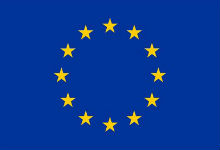
This project has received funding from the Research Fund for Coal and Steel under grant agreement no. 754205.

